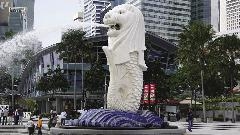With the value of the Rupee rode tidal waves over the past few months, the outbound travel market has seen a dip in numbers, especially to established countries such as UK and USA. However, the Indian traveller has come too far to back out of the game altogether. The result? South East Asia has witnessed a surge in arrivals and are expecting further gain in the peak holiday season this year.
The journey so far
When tourism research studies churned out their results, all of which highlighted an increase in Indian travel to South East Asian countries, it did not raise too many eyebrows. This was owing to the continuous success these destinations have been facing in their attempts to draw Indian travellers to their land. Ease of access, value for money deals and close proximity have all ensured that the likes of Indonesia, Malaysia, Singapore and Thailand, among others, welcome a continuous flow of Indians.
For instance, Tourism Malaysia revealed that, the Indian market is a significant contributor in visitor arrivals and has proven to be a strong and viable venture for Malaysia. There has been a healthy double-digit increase, in Indian arrivals into Indonesia, and India now stands as the ninth largest source market for inbound tourism to Indonesia. Last year, Thailand received a total number of 1,016,013 tourist arrivals from India, an increase of 11 per cent over 2011.
Impact of the Rupee
According to Sanjay Sondhi, Country Director- Visit Indonesia Tourist Office (VITO) India, tourism to Indonesia is not affected by Rupee depreciation, since Indonesian companies quote in IDR and even IDR has depreciated against US$ hence Indonesia is considered a value for money destination. “The depreciation of the Indian rupee and rising airfares is compensated with the competitive packages available for the destination,” he added.
Sethaphan Buddhani, Director, Tourism Authority of Thailand (TAT), Mumbai office stated that the destination is confident that travel to South East Asia will not be impacted much in the long run as a result of the Rupee fall. “The mindset of the modern traveller has undergone a huge change in recent years wherein the concept of an international vacation has been embedded in their psyche. Thailand has always been a value for money destination with excellent connectivity and range of unique attractions. This coupled with our constant efforts of reinventing ourselves and raising the quality of services offered, provides a strong foundation for sustainable growth,” he said.
Cementing their faith in Indian outbound, Singapore Tourism Board (STB), recently launched a new MICE campaign called ‘Inspire’. Chang Chee Pey, Executive Director – South Asia, Middle East & Africa, STB stated that, even in today’s economy and situation, Indian companies would want to increase their toplines and revenues, making it vital for the destination to have an incentivised programme for the segment. “US and Europe are now too expensive, so they will look at closer destinations, and that is where Singapore will benefit,” he added. In contrast, Manoharan Periasamy, Director, Tourism Malaysia opined that the Rupee depreciation is going through turmoil leading to Indians preferring to travel domestically.
Staying ahead of competition
Be their forecast positive or negative, South East Asian countries have maintained an unwavering faith in Indian footfall. The situation then elevates to each country staying ahead of its game in a bid to woo Indian travellers. 60 per cent of Indians arrivals to Thailand are repeat visitors and hence TAT will be promoting newer regions such as Chiang Mai, Chiang Rai and Khao Yai, Trang, Surat Thani and Koh Samui to attract more and more Indian travellers, said Buddhani.
“We are also looking to tap high-end luxury Indian travellers, especially in the wedding segment. We also have a project called ‘My Own Jet’, allowing customers to book a private jet to come to Thailand. We will also focus on Golf and medical tourism to enhance our product offerings. We believe we have the right range of products to offer to stay ahead of our competitors and satisfy our visitors,” he revealed.
Sondhi stated that, since the beginning of 2013 Indonesia is focusing on a 16 – 7 –16 concept. The concept is focus on 16 international markets, showcasing 7 Tourism USPs of Indonesia and developing 16 new destinations within Indonesia for International markets, in a bid to set the destination apart from its neighbours.
Malaysia, which is targeting 780,000 tourist from India in 2013, is preparing for its ‘Visit Malaysia Year (VMY) 2014’ to draw tourists. “The campaign, which runs for one year, not only promotes Malaysia on an international level but also highlights various pro-active initiatives by the Ministry of Tourism to ensure Malaysians understand the economic benefits of a successful VMY 2014,” Manoharan said.
Working with the travel trade
Being established destinations owes a lot to the Tourism Boards’ work with the travel trade in India, a support that the countries laud and will continue to work closely with. “The travel trade industry is our bloodline. We constantly conduct destination trainings, road shows, and offers on bookings, online training modules, certification courses and direct engagement and awareness campaigns for the trade. We also associate with the key travel trade from across the country for special joint promotions and marketing campaigns and one can expect to see a lot many more initiative participation with the travel community,” said Buddhani.
Tourism Malaysia plans to host FAMs and attractive incentives are planned for travel trade, tour operators and wedding planners, and also promote Indian weddings in Malaysia through affordable travel packages that have been drafted with the aid of Malaysia Airlines and 5-star properties, revealed Periasamy.
“The Indian Travel Trade is very important due to the big size of outbound traveller growth within ASEAN and hopefully more direct connectivity. VITO India jointly with the Ministry of Tourism and Creative Economy, embassy and consulates, airlines and local industry partners conducted various activities like training presentations, familiarisation tours and the most recent Indonesia Sales Mission 2013, to promote the destination and educate the travel agents on Indonesia,” Sondhi concluded.






